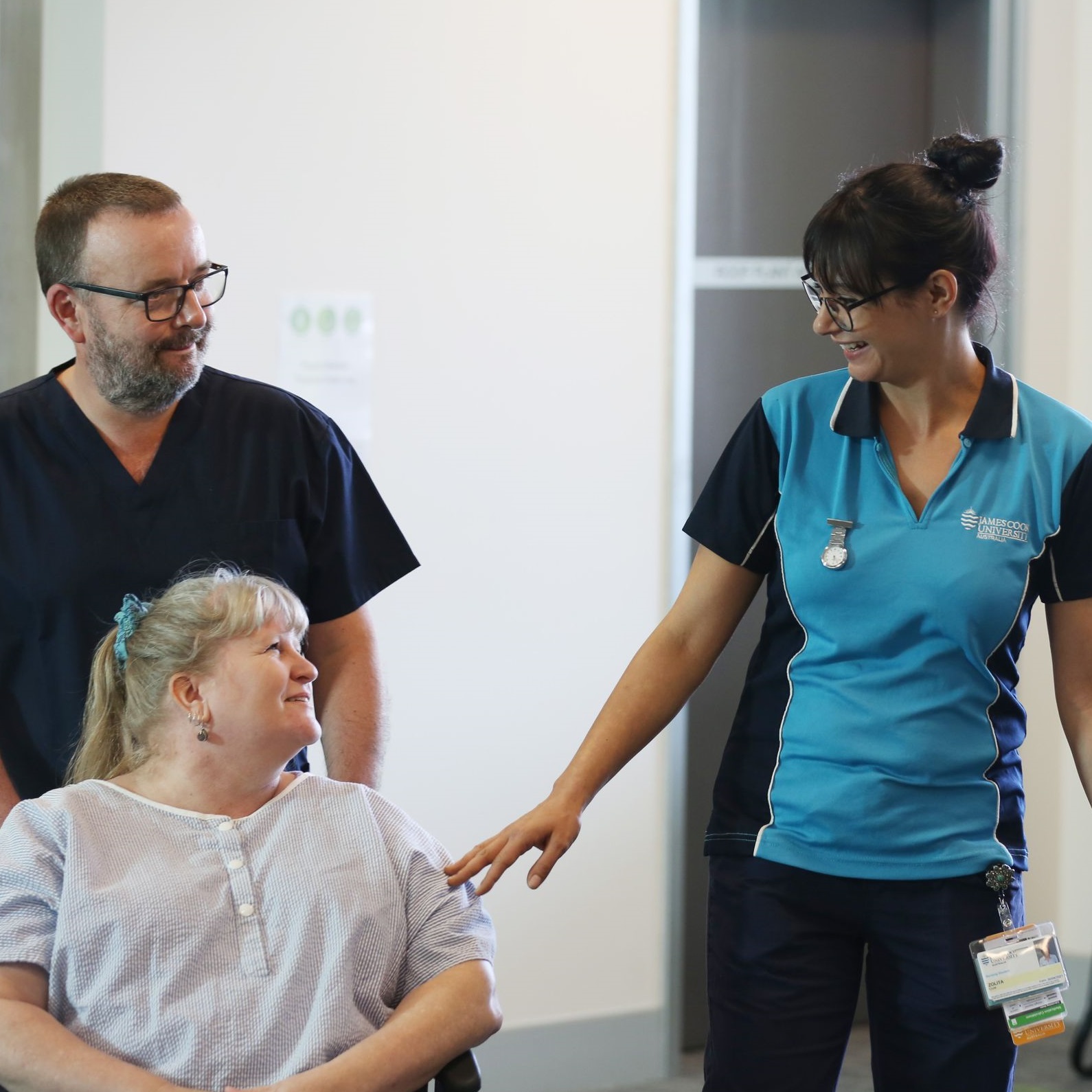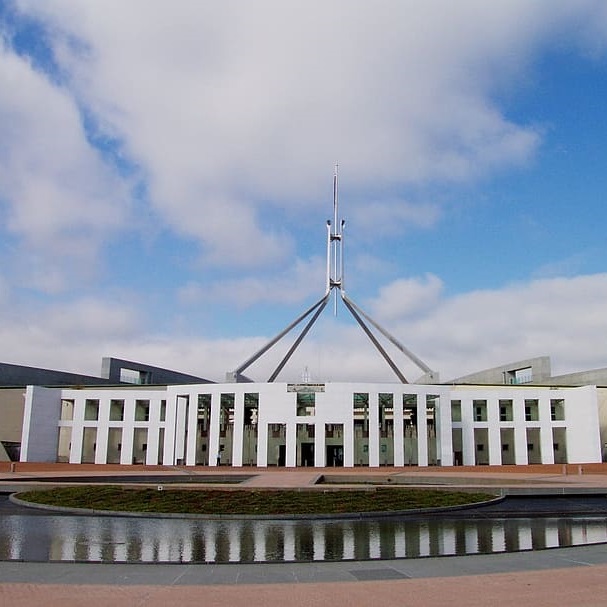Our research with and for industry and community
CBLG is committed to conducting research that is not only relevant but also impactful. Some of our research projects are cross-disciplinary in nature and have a strong applied focus, often involving collaboration with researchers from various disciplines outside CBLG. We emphasize co-designing and co-producing research projects with stakeholders from different sectors in Northern Queensland, the Tropics, and beyond.
Our researchers assume prominent roles in providing guidance to government agencies, corporations, and nonprofit organisations regarding business and economic transformations, law reform, and policy matters. They serve as intellectual leaders, shaping the direction of transformation and reform across key sectors that hold particular significance in Northern Queensland, the Tropics, and beyond. Through our collaborative efforts and expertise, we strive to make a positive difference in society and contribute to the betterment of the regions we serve.
Our research connections with practice encompass a diverse range of featured sectors, which we have carefully selected. It is important to note that this list is by no means exhaustive, as our engagements extend beyond these sectors.
CBLG’s research in the Tourism, Leisure, Hospitality & Events sectors
CBLG has international recognition for the research it produces in this area. With a key focus on sustainable tourism, CBLG has been highly ranked globally, in for example, The Shanghai Global Ranking of Academic Subjects and the QS Subject Rankings.
Research Lead: A/Professor Denis Tolkach

Example 1: Cultural Tourism Recovery post COVID-19 in Southeast Asia
Problem:
Cultural tourism is a major income stream for regional communities in Australia and in ASEAN countries. These communities have been severely affected by the COVID-19 pandemic, as international and domestic tourism has been disrupted. Local governments, small businesses and community organisations often lack access to knowledge and support opportunities to overcome crises and advance economic and community development.
The Solution:
A hybrid workshop series were conducted in Australia, Indonesia, Malaysia and Philippines, bringing together government, business, academia and community organisations involved in cultural tourism in regional areas. Funding was provided by Department of Foreign Affairs and Trade Australia-ASEAN Council. The workshop series engaged over 700 individuals. Besides capacity building during the workshops, the project generated a wealth of educational resources.
Recorded workshops (Dr Denis Tolkach) are available to public on YouTube.
CBLG’s research in the Health Care & Services sectors
CBLG’s research is used by a variety of stakeholders in various health services sectors. Illustrative projects include human resource management and remote workforce management practices, and business model innovation projects for regional health service providers. Amongst the many research collaborations, CBLG researchers have worked with, for example, the Menzies School of Health Research, WA Country Health Services and Queensland Health’s Remote Mental Health Team.
Research Lead: Dr Leigh-ann Onnis

Example 1: Work health and safety for flexible workers
The Policy Problem:
In recent years, technological advances have enabled working remotely to become more commonplace. However, in 2020 when work-from-home arrangements were implemented broadly in response to the COVID-19 pandemic, the number of workers engaged in flexible working arrangements rapidly increased in Australia. This shift towards flexible working highlighted the need for employers to ensure that they are meeting their obligation to provide a psychosocially safe working environment inclusive of flexible workers.
The Solution:
The Centre for Work Health and Safety (NSW Government) commissioned a research collaboration to investigate how employers can identify psychosocial risks faced by employees when working from home, and the strategies that can be used to prevent psychosocial harm for flexible workers.
The research collaboration concluded that effective work health and safety systems should comprise resources and tools tailored to meet the needs of flexible workers. To support businesses in this endeavour, a Best Practice Guide for flexible and work-from-home arrangements was developed.
Bentley, T., Farr-Wharton, B.,Onnis, L., Brunetto, Y., Caponecchia, C., Cattani, M., Vassiley, A., Nguyen, H., & Neta,A. (2021). Flexible work and psychological safety - Best practice to advance psychologically safe solutions from alternate locations: A report on findings from focus groups with NSW flexible employees, senior managers, WHS Practitioners and regulators (Phase 3). Centre for Centre for Work Health & Safety, NSW.
Example 2: Work design for an ageing demographic
The Policy Problem:
The ageing demographic of workforces brings work health and safety challenges for employers. The Australian Institute of Health and Welfare reported that in 2014-15, 30% of Australians had work-related musculoskeletal disorders (WMSDs), with the prevalence increasing with age. For older workers, psychological injury exacerbated by WMSDs may lead to loss of employment and early retirement, which increases the risk of functional decline and social isolation. With the Work Health and Safety Roadmap for NSW 2022 setting a target for a 50% decline in the incidence rate of claims for musculoskeletal injuries and serious mental health conditions, the impetus for research focusing on the design of work to prevent WMSDs and psychological injuries for older workers was established.
The Solution:
As part of The Ageing demographic of the Australian workforce: prevention of work health and safety harm policy area, the Centre for Work Health and Safety (NSW Government) commissioned research to provide greater understanding of how to prevent psychological and physical harm among older workers enabling continued participation in the workforce.
An organisational work design resource specifically for older workers was developed – The Healthy Old Worker Toolkit. Then, the Healthy Old Worker Toolkit was piloted and evaluated with five organisations from a range of industries, with a final report prepared for the Centre for Work Health and Safety. The Healthy Older Worker Toolkit developed to guide organisations in designing healthy, safe and sustainable workplaces for older workers is available from the Centre for Work Health and Safety: https://www.centreforwhs.nsw.gov.au/tools/healthy-older-worker-toolkit
Bentley, T., Onnis, L., Vassiley, A., Andrew, C. Farr-Warton, B., Caponecchia, C., O’Neill, S., & Neta,A., (2022) Participatory organisational intervention design: Developing the Healthy Older Worker (HOW) Toolkit. Final Report.Centre for Work Health & Safety, NSW.
CBLG’s research in the Resources, Critical Minerals, Mining & Energy sectors
CBLG’s researchers contribute to unpacking the global energy transition to net zero. They delve into various aspects, including sustainable transport and last-mile logistics, green supply chain management, and circular economy and waste management solutions. They also engage in the pricing of energy, and economic valuations of natural assets and of environmental and climate policies. Their research extends to climate risk modelling and economic development. Researchers also support policy makers and the business sector in better understanding the uptake of renewable energy technologies.

Example 1: What to do with mine pits when they are closed?
The Management Problem:
Transition to renewable energy sources comes with the closure of open-cut mining operations. The vexing question for mine owners, government and local communities concerns the future options for managing and possibly repurposing of large-scale mine pits.
The Management Solution:
This report identified possible options for re-purposing mine pits and assessed their feasibility, providing critical information for decision makers facing a complex and difficult problem.
Reeves, J., Morgan, D., Reimers, V., Baumgartl, T., & Green, M. (2021). Final Mine Void Forms and Future Land and Water Uses: Researching the Community Perspective, Research Report prepared for AGL.
Example 2: Understanding economic impact
The Policy Problem:
What is the economic impact of the NSW minerals and resources sector?
The Economics Solution:
This report provides findings from a survey of NSW exploration and mining companies’ expenditure data that clarify the economic contribution of the industry throughout NSW. The spending data – including employee salaries and wages, business purchases, community contributions and local government payments – was collected by postcode where it was spent to allow local, regional, and state-wide economic impacts to be assessed.
Lawrence, R. and Gudergan, S. (2012) Economic impact study - Minerals and resources sector in NSW, Commissioned Report for NSW Minerals Council.
CBLG’s research in the Agriculture & Aquaculture sectors
CBLG’s researchers play a significant role in advancing sustainable aqua- and agriculture practices and industries. Collaborating with the Tropical North Queensland (TNQ) Hub, we support farmers in various sectors, including sugar, beef, dairy, vegetable, citrus, and tropical fruit. Our focus is on empowering them to undergo a transformative journey towards enhanced drought resilience. Through our research, we foster sustainable practices and drive positive change in the aqua- and agriculture sectors.
Research Lead: A/Professor Rachel Hay

Example 1: Integrated water models for Australia
The Policy Problem:
The Australian government identified the multitude of integrated water models and needed a way to decide which was fit for a particular purpose and the assumptions of each.
The Economics Solution:
The technical report provides a framework and taxonomy that allowed a simple classification of integrated water models according to the objective function being maximised and the associated constraints.
Stoeckl, N., Grainger, D., Esparon, M., Farr, M., Larson, S., Kennard, M., Álvarez-Romero, J.G., Cattarino, L., Adams, V., Douglas, M. and Pressey, B., 2016. Integrated models, frameworks and decision support tools to guide management and planning in Northern Australia. James Cook University, Townsville.
CBLG’s research in the Government, Public Services & Defence sectors
Our researchers work with local, state, and national governments to inform policy design. They also connect with intergovernmental organisations such as the UN, on sustainable economic development initiatives. Furthermore, researchers engage in designing future-focused defence solutions.

Example 1: Australian superannuation funds disclosure index and practices
The Policy Problem:
Since the introduction of the Superannuation Guarantee in 1991, Australian working adults can choose their preferred superannuation funds. The MySuper product was introduced under Australian legislation in 2012 as a standard default option that can be compared across different superannuation funds to aid decision making for the Australian working population. The Stronger Super Reform in 2013 recommended that disclosure and communication of superannuation funds be improved to provide transparency and quality information to enhance decision making.
The Solution:
Preparation of a commissioned paper for the Australian Centre of Financial Studies to develop a disclosure index for Australian superannuation funds and disclosure practices with the MySuper product in 2016.
Four superannuation funds disclosure indexes were developed, including SuperGov Index, SuperInvest Index, SuperFee Index and SuperInfo Index. While governance information has been transparent, disclosure about fund fees and costs, and investment products used to be limited. An additional index, namely MySuperInfo, was then developed to provide access to the implementation and information disclosure of MySuper.
Cam, M-A, Awan, O. & Tan, M. (2018), Superannuation Fund Disclosure: Past, Present and Future, prepared for Australian Centre of Financial Services Commissioned Paper Series, October, Melbourne.